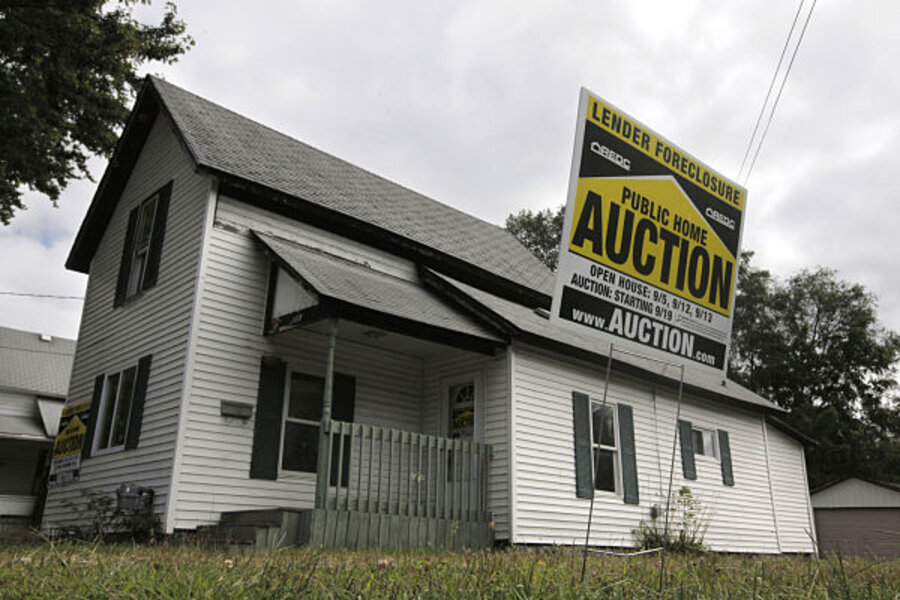Mortgage delinquencies may be peaking, but housing market far from normal
America’s foreclosure wave showed signs of easing Friday, but the problem is still a long way from over.
The share of mortgage loans in the initial stage of delinquency fell in the fourth quarter of last year, according to numbers released by the Mortgage Bankers Association. The decline in loans one-month past due is a promising sign, because the fewer loans become delinquent, the fewer will end up in foreclosure.
Still, the group said the percentage of loans in foreclosure rose, and the share of loans near foreclosure (90-days past due) remains at record highs.
Essentially, these numbers suggest that the mortgage-default problem may be peaking, but that a long slog remains before the housing market is back to normal.
“This drop is important because 30-day delinquencies … gives us growing confidence that the size of the problem now is about as bad as it will get,” said Jay Brinkmann, the group’s chief economist, in a statement accompanying the new numbers.
The report highlighted the ongoing real estate troubles on a day when President Obama announced a new program designed to prevent foreclosures in the states hardest hit by home-price declines.
The president, in Nevada, announced that $1.5 billion in money from the Troubled Asset Relief Program (TARP) would be made available to state housing agencies in states that have seen home prices fall by 20 percent or more. Those agencies may use the money to aid unemployed mortgage holders, helping to stave off foreclosure until the owners find new jobs.
The best recipe for a housing recovery is an economic recovery that puts more people back to work – and revives confidence among home buyers. Many economists expect that the economy will begin adding jobs in the next few months, after two years of job losses.
But even if employment picks up, the housing market still must navigate a major adjustment. The pace of foreclosures could remain very high even if it stops getting worse.
A separate report this week, from the credit-rating firm Standard & Poor’s, underscored this point. S&P warned that downward pressure on home prices could resume this year as banks liquidate more properties.
The analysts at S&P cited several reasons. First, many long-delinquent loans have not yet been taken over by banks. Also, many loans that banks have tried to “cure” (by modifying mortgage terms) end up going bad again.
These factors, combined, create a large “shadow inventory” in the real estate market.
“In our opinion nearly all currently distressed properties and the majority of recently cured properties will indeed eventually need to be liquidated,” the report concludes.
According to the Mortgage Bankers Association, about 4.6 percent of all home loans are currently in some stage foreclosure, and another 9.5 percent in some stage of delinquency.
In some cases, distressed properties can change hands without banks or borrowers being saddled with the burden of foreclosure. One path is the “short sale,” where the lender allows the borrower to sell a home for less than the loan balance due. An Obama administration program to begin in April will encourage more voluntary short sales.





